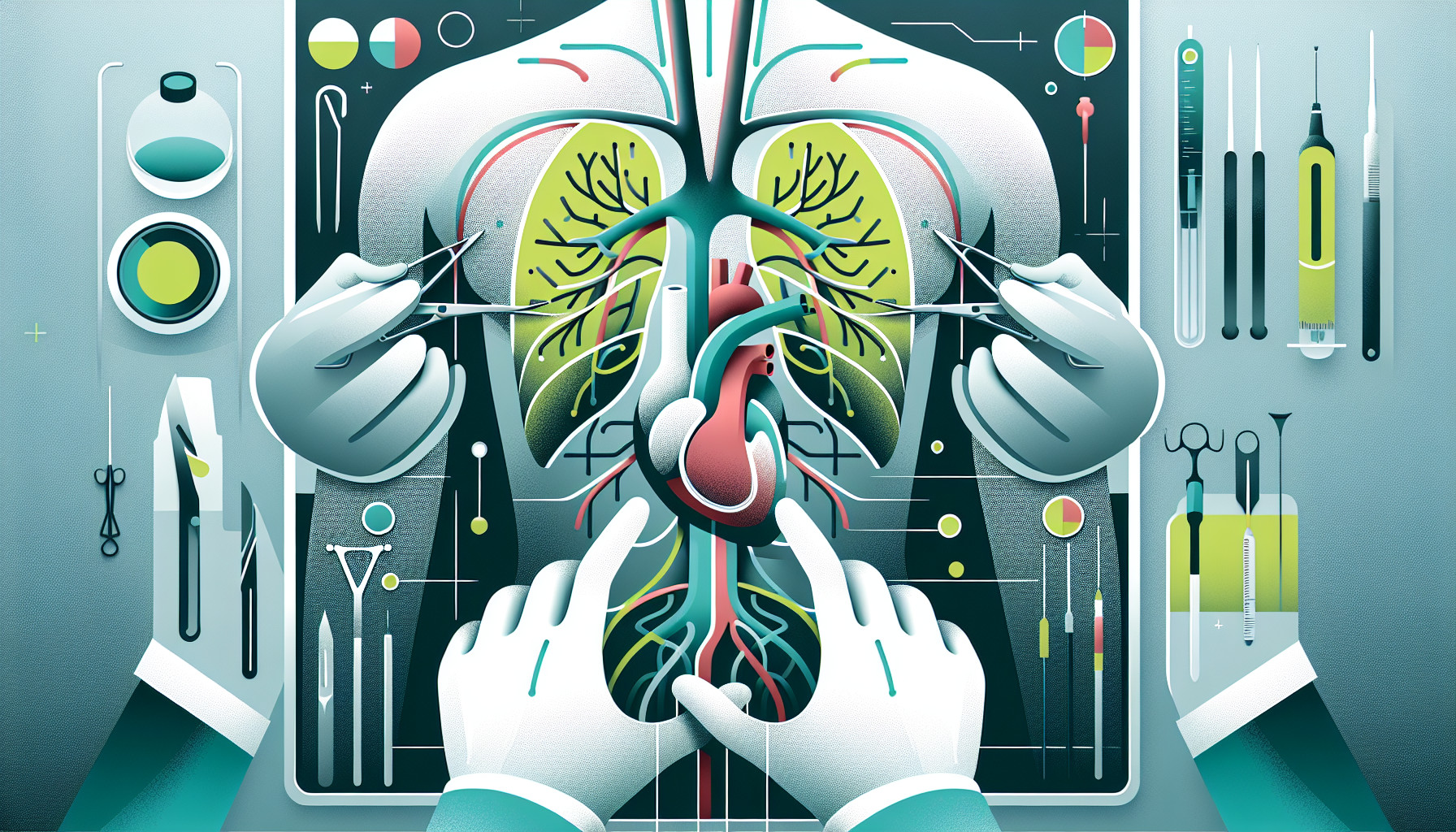Our Summary
This research paper looks at the treatment of abdominal aortic aneurysms (AAA) in Brazil’s public health system from 2008 to 2019. An AAA is a dangerous condition where the main blood vessel in the abdomen swells up, which can cause it to burst if not treated. The study found that there were 13,506 AAA repairs during this period, with most of them being emergency procedures and involving a technique called endovascular repair. This technique was increasingly used over time and was linked with lower death rates in the hospital. The study also found differences in AAA repair rates and death rates across different regions of Brazil. The researchers noted a worrying trend of decreasing AAA repair rates, suggesting that more could be done to treat this life-threatening condition.
FAQs
- What is an abdominal aortic aneurysm (AAA)?
- What is the endovascular repair technique used in AAA treatments?
- What were the key findings of the study on AAA repairs in Brazil’s public health system from 2008-2019?
Doctor’s Tip
One helpful tip a doctor might tell a patient about aortic aneurysm repair is to follow up regularly with their healthcare provider for monitoring and surveillance of the aneurysm. It is important to manage any risk factors that may contribute to the growth or rupture of the aneurysm, such as high blood pressure, smoking, and atherosclerosis. Patients should also be aware of symptoms that may indicate a potential complication, such as sudden severe abdominal or back pain, and seek immediate medical attention if they experience any of these symptoms. Regular monitoring and lifestyle modifications can help prevent complications and improve outcomes for patients with aortic aneurysms.
Suitable For
Patients who are typically recommended aortic aneurysm repair include:
Patients with symptomatic aortic aneurysms, such as abdominal or thoracic aortic aneurysms, who are experiencing symptoms such as severe back or abdominal pain, shortness of breath, or difficulty swallowing.
Patients with large aortic aneurysms that are at risk of rupturing, causing life-threatening bleeding.
Patients with a family history of aortic aneurysms or connective tissue disorders, such as Marfan syndrome, who are at increased risk of developing aortic aneurysms.
Patients with risk factors for aortic aneurysms, such as smoking, high blood pressure, or atherosclerosis, who are at increased risk of developing the condition.
Patients with aortic aneurysms that are rapidly growing in size, as this may indicate an increased risk of rupture.
Overall, the decision to recommend aortic aneurysm repair will depend on the individual patient’s specific medical history, risk factors, and overall health status. It is important for patients to discuss their treatment options with their healthcare provider to determine the most appropriate course of action.
Timeline
- Before aortic aneurysm repair:
- Patient may experience symptoms such as abdominal or back pain, a pulsating feeling near the navel, or other signs of aortic aneurysm.
- Patient undergoes diagnostic tests such as ultrasound, CT scan, or MRI to confirm the presence of an aortic aneurysm.
- Patient may be monitored closely by healthcare providers to prevent the aneurysm from rupturing.
- Patient may be prescribed medication to lower blood pressure and reduce the risk of rupture.
- After aortic aneurysm repair:
- Patient undergoes a surgical procedure to repair the aneurysm, either through open surgery or endovascular repair.
- Patient is monitored closely in the hospital post-surgery to watch for any complications.
- Patient may experience pain, fatigue, and discomfort during the recovery period.
- Patient may be prescribed medication to prevent blood clots and to manage pain.
- Patient undergoes follow-up appointments with healthcare providers to monitor recovery and ensure the success of the repair procedure.
What to Ask Your Doctor
- What are the different treatment options for repairing an aortic aneurysm?
- How do you determine the best treatment approach for my specific case?
- What are the risks and potential complications associated with aortic aneurysm repair surgery?
- What is the recovery process like after aortic aneurysm repair surgery?
- How long will it take for me to fully recover and resume normal activities?
- What lifestyle changes or precautions should I take after aortic aneurysm repair surgery to prevent future complications?
- Are there any long-term implications or risks associated with having had an aortic aneurysm repair surgery?
- How often will I need follow-up appointments or tests to monitor my condition post-surgery?
- Are there any specific warning signs or symptoms I should watch out for that may indicate a complication with the repair?
- What is the success rate of aortic aneurysm repair surgery, and what factors can affect the outcome?
Reference
Authors: Louzada ACS, da Silva MFA, Portugal MFC, Stabellini N, Zerati AE, Amaro E, Teivelis MP, Wolosker N. Journal: World J Surg. 2022 Jun;46(6):1485-1492. doi: 10.1007/s00268-022-06486-0. Epub 2022 Feb 15. PMID: 35166878
